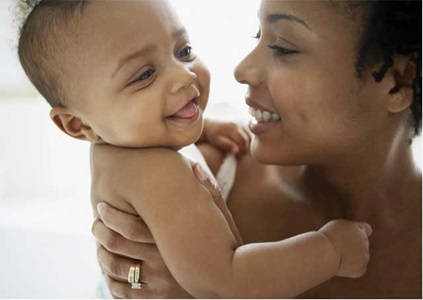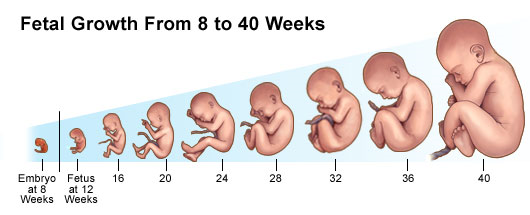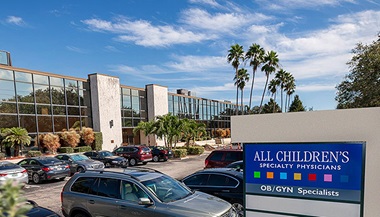The Second Trimester
What You Need to Know
- During your second trimester prenatal visits, your health care provider will continue to check on your and your baby’s health, including monitoring the fetal heartbeat.
- The second trimester is the most physically enjoyable for most women. Morning sickness usually lessens by this time, and the extreme tiredness and breast tenderness usually ease up.
- Your fetus has now developed all its organs and systems and will now begin to grow in length and weight.
- You may be able to feel the movement of the fetus for the first time at around 20 weeks. This phenomenon is called quickening.
- A fetus born at the end of 24 weeks may survive in a neonatal intensive care unit.
Prenatal Visits During the Second Trimester
During your second and third trimester prenatal visits, your health care provider may check the following, depending on your current medical condition and the health of the fetus:
-
Any current symptoms or discomforts
-
Your weight
-
Your blood pressure
-
Urine test. This is done to find albumin, a protein that may indicate pre-eclampsia or toxemia, and glucose (which may indicate hyperglycemia).
-
Growth, size and development of the fetus
-
Size of the uterus. After approximately 12 weeks of gestation, the uterus can be felt through the abdominal wall.
-
Height of the fundus (top of the uterus), starting at 20 weeks of gestation
-
Fetal heartbeat
The Second Trimester: What to Expect
The second trimester marks a turning point for the mother and fetus. You will usually begin to feel better and start showing the pregnancy more. Your fetus has now developed all its organs and systems and will now begin growing in length and weight.
During the second trimester, the umbilical cord continues to thicken as it carries nourishment to the fetus. However, harmful substances also pass through the umbilical cord to the fetus, so care should be taken to avoid alcohol, tobacco and other known hazards.
During the second trimester, both your body and the fetus continue to grow.
Johns Hopkins Hospital Designated as Baby-Friendly

The Baby-Friendly Hospital Initiative, a global program launched by the World Health Organization and the United Nations Children’s Fund, has designated The Johns Hopkins Hospital as Baby-Friendly. This designation is given to hospitals and birthing centers that offer an optimal level of care for infant feeding and mother-baby bonding.
The Second Trimester: Changes to Your Body
The second trimester is the most physically enjoyable for most women. Morning sickness usually lessens by this time, and the extreme tiredness and breast tenderness usually ease up. These changes can be attributed to a decrease in levels of human chorionic gonadotropin hormone and an adjustment to the levels of estrogen and progesterone hormones.
The following is a list of changes and symptoms that may happen during the second trimester:
-
Appetite may increase.
-
You may be able to feel the movement of the fetus for the first time around 20 weeks. This phenomenon is called quickening.
-
The uterus grows to the height of the bellybutton around 20 weeks, making the pregnancy visible.
-
The skin on the belly may itch as it grows, and there may be pain down the sides of the body as the uterus stretches. The lower stomach may ache as ligaments stretch to support the uterus.
-
The need to urinate often may decrease as the uterus grows out of the pelvic cavity, relieving pressure on the bladder.
-
Your nose may become congested, and you may experience nosebleeds. This is due to the increase in hormones (estrogen and progesterone) and blood flow that affect the mucous membranes and blood vessels in the nose.
-
Your gums become spongier and may bleed easily. This is due to the increase in hormones (estrogen and progesterone) that affect the mucous membranes in the mouth.
-
Varicose veins and hemorrhoids may appear.
-
You may have a white-colored vaginal discharge called leukorrhea. (A colored or bloody discharge may signal possible complications and should be examined immediately.)
-
The increasing weight gain may cause backaches.
-
Skin pigmentation may change on the face or abdomen due to the pregnancy hormones.
-
Heart burn, indigestion and constipation may continue.
The Second Trimester: Fetal Development
Now that all the major organs and systems have formed in the fetus, the following six months will be spent growing. The weight of your fetus will multiply more than seven times over the next few months, as the fetus becomes a baby that can survive outside of the uterus.

By the end of the second trimester, your fetus will be about 13 to 16 inches long and weigh about 2 to 3 pounds. Fetal development during the second trimester includes the following:
-
The fetus kicks, moves and can turn from side to side.
-
The eyes have been gradually moving to the front of the face, and the ears have moved from the neck to the sides of the head. The fetus can hear your voice.
-
A creamy white substance (called vernix caseosa, or simply vernix) begins to appear on the fetus and helps to protect the thin fetal skin. Vernix is gradually absorbed by the skin, but some may be seen on babies even after birth.
-
The fetus is developing reflexes, like swallowing and sucking.
-
The fetus can respond to certain stimuli.
-
The placenta is fully developed.
-
The brain will undergo its most important period of growth from the fifth month on.
-
Fingernails have grown on the tips of the fingers and toes, and the fingers and toes are fully separated.
-
The fetus goes through cycles of sleep and wakefulness.
-
Skin is wrinkly and red, covered with soft, downy hair (called lanugo).
-
Hair is growing on the head of the fetus.
-
Fat begins to accumulate in the fetus.
-
Eyelids are beginning to open, and the eyebrows and eyelashes are visible.
-
Fingerprints and toeprints have formed.
-
Rapid growth is continuing in fetal size and weight.
-
The 20th week marks the halfway point of the pregnancy.
A fetus born at the end of 24 weeks may survive in a neonatal intensive care unit.






